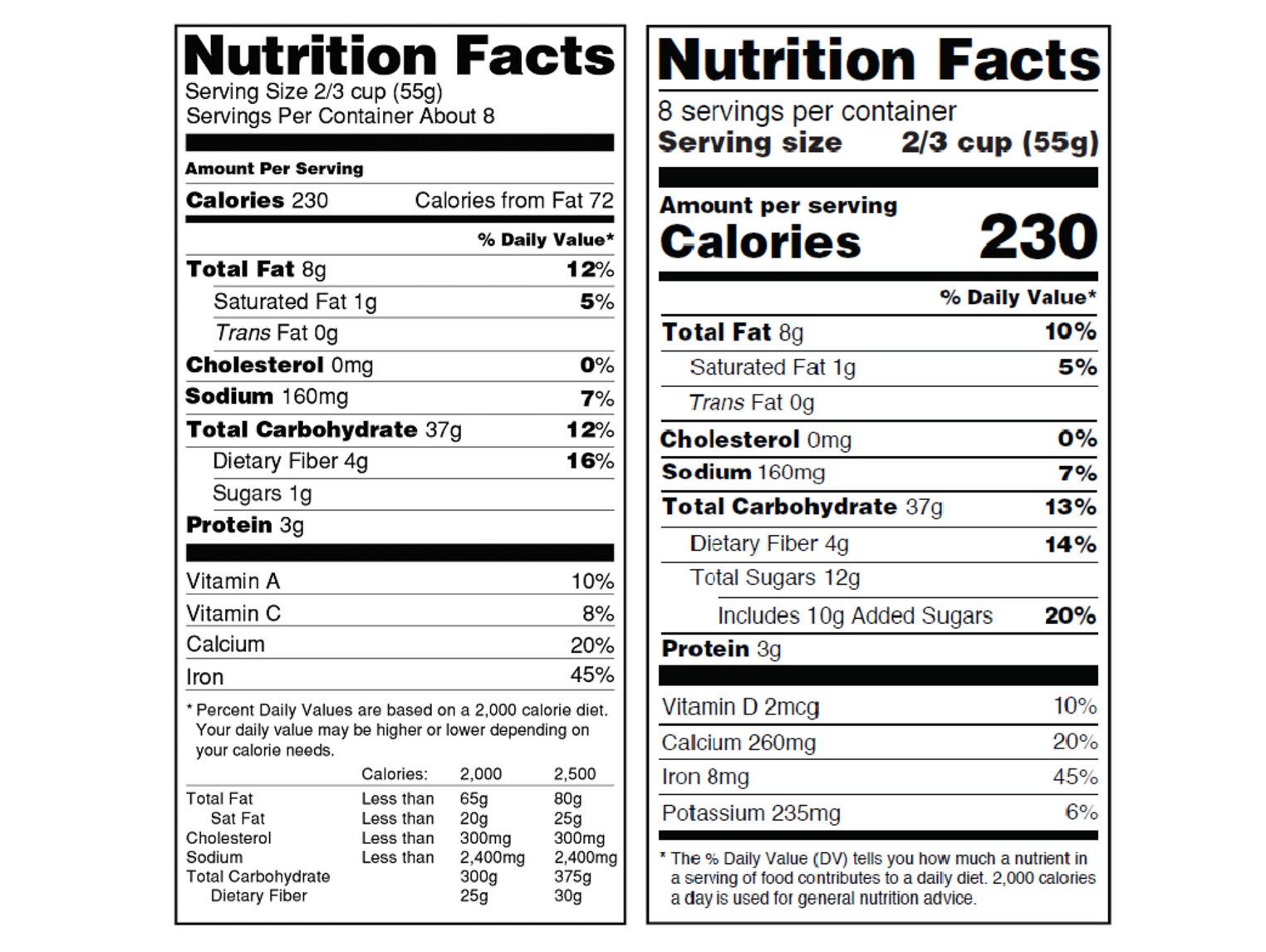FDA Makes Major Update to the Nutrition Label for First Time in 20 Years
 Bigger calorie type font, addition of added sugar, larger portion sizes, and more!
Bigger calorie type font, addition of added sugar, larger portion sizes, and more!
First Lady Michelle Obama announced recently at the Partnership for a Healthier America conference that the FDA would be making substantial changes to the Nutrition Facts label. The first major change made in 20 years, the new labels aim to provide more information to consumers that more closely reflect actual eating habits. Updates will include an enlarged calorie count number, updated serving sizes, and the addition of a percent daily value for added sugars. We see these as very positive changes for people with diabetes. Major companies will have until July 26, 2018 to implement the changes. See this infographic from the JAMA medical journal on the US nutrition guidelines.
What are the major changes of the new label?
The goal of the update is to help people better know and understand the nutritional value of what they are consuming. There are three key changes that are important for people with diabetes:
-
Updating serving size amounts to reflect more realistic portion sizes, not just what people “should be eating.” For instance, the serving size for ice cream is changing from 1/2 cup to 2/3 cup. Moreover, packages that are between one and two “normal” serving sizes will be labeled as one serving, i.e. a 12-ounce or a 20-ounce bottle of soda will be labeled as a single serving. The FDA reasoned that most people will consume the whole amount of food in a single package, and this change will make it easier for consumers to understand how much they are actually eating. Eliminating the need for calculations to determine caloric content of a bottle of soda or similar packages is certainly a plus.
-
“Added sugars” will be included on the label in grams and percent Daily Value. Previously, “added sugars” was not required on labels at all. This is a great change for people with diabetes, as added sugars are a good indicator of processed food, and often, something that increases blood glucose quickly.
-
Removal of “calories from fat” from the label, as newer nutrition science suggests the type of fat consumed, more than the amount of fat consumed, is a better indicator of health. For instance, nuts contain mostly calories from fat, but are still a very good choice for people with diabetes. “Total fat,” “saturated fat,” and “trans fat” will still be required on the label.
A Primer on Added Sugar
What is “added sugar,” and why add it to the nutrition labels? Added sugar is a useful marker of processed food. While many foods come with natural sugars – such as fruits, vegetables, and milk – whole foods don’t have any added sugar. Whole foods also come with fiber and lots of water, which makes them more filling and reduces how quickly they increase blood sugar. Foods with added sugar are easy to overeat, can drive fast spikes in blood glucose, and are associated with greater weight gain. Often, foods with added sugar also come with other unhealthy ingredients, such as trans fats. In essence, avoiding adding sugar is another way of saying: “eat real food.”
The official Dietary Guidelines for Americans (2015-2020 edition) and the World Health Organization recommend that added sugar make up 10% or less of someone’s daily caloric intake. Additionally, the American Heart Association recommends no more than 100 calories for women (25 grams of sugar) and no more than 150 calories for men (38 grams of sugar). The previous absence of added sugar on labels makes it challenging for people to know how much they’re consuming – this is even harder because added sugar has at least 61 different names on ingredient lists, such as corn syrup, anhydrous dextrose, evaporated cane juice, and more. The average American consumes an extra ~350 calories of added sugar per day, and the new percent daily value should help people understand how much added sugar has been “hiding” in their diets.
Will these changes have an impact?
In response to these changes, dietitian and diabetes educator Hope Warshaw said, “With an initial first glance it looks like FDA will institute a number of positive changes to the Nutrition Facts panel. This includes the addition of added sugars as a subset of total sugars (particularly important for people with diabetes), more clarity on the nutrition facts for foods typically eaten as one serving, and synergy with the 2015-2020 Dietary Guidelines. I'm disappointed to see that serving sizes will be increased to match the amounts that people are eating when we're generally eating too many calories and have a significant obesity issue. Further to that, the two to three year wait seems like an industry concession.” On the latter point, the alternative – smaller serving sizes – poses the risk of giving consumers a false impression of how many calories and nutrients they are consuming, particularly in cases where the average amount of food consumed is much greater than the displayed serving size (i.e., if people typically eat an entire candy bar in one sitting even though the package is technically labeled as “two servings”).
It’s unclear to what extent these updates will change behavior. A study done by the Journal of the Academy of Nutrition and Dietetics in 2010 showed that only ~62% of consumers pay attention to nutrition labels, calling for the need to have more prominently placed nutritional values. However, it’s ultimately positive to see changes to the labels to better reflect current nutrition science, and we applaud the FDA (Dr. Califf – the new FDA commissioner – was at the press conference at which this was announced!) and Partnership for a Healthy America’s efforts on getting these new labels passed. –YY/AJW







